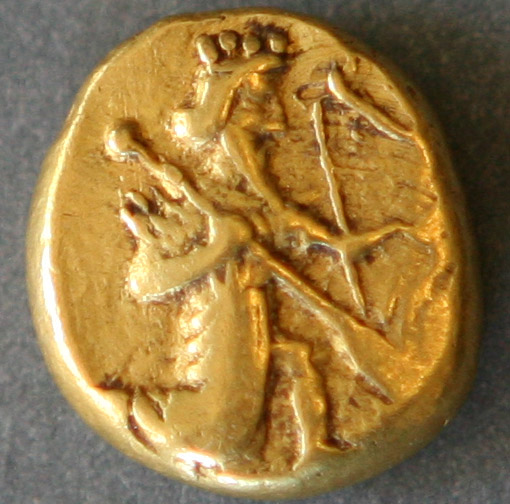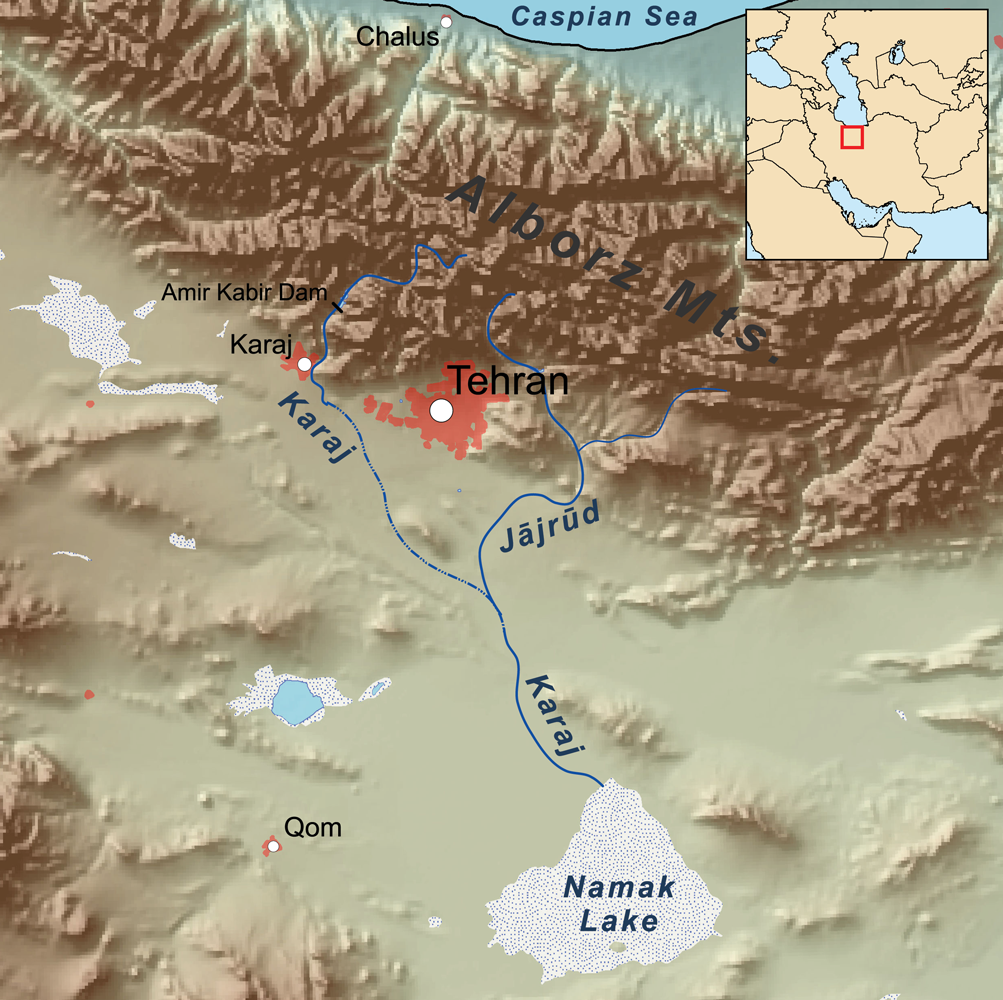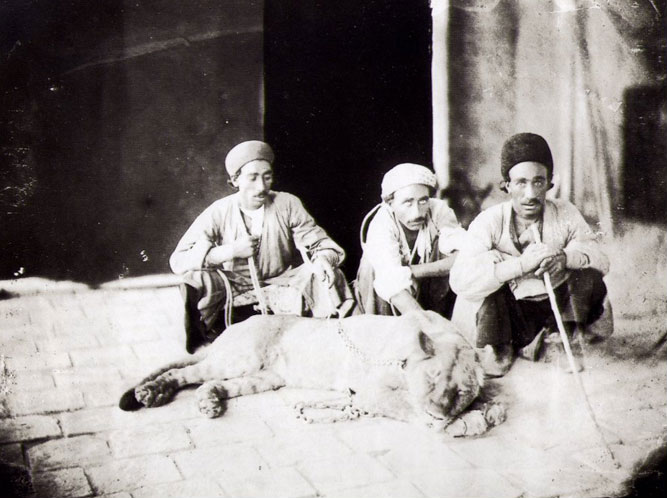|
Department Of Environment (Iran)
The Iranian Department of Environment is a governmental organization, under the supervision of the president, that is responsible for matters related to safeguarding the environment. The origins of the department can be traced back to the Hunting Club of Iran, established in 1956. Later, it developed into an organization overseeing hunting and fishing activities in the country. In 1971 the organization changed its name to its current one, and notably has hosted the Ramsar Convention on Wetlands of International Importance in the city of Ramsar on the same year. Today the organization maintains a list of four types of protected areas as follows: * 23 National Parks, including Kavir, Touran, and Tandooreh National Parks, * 32 National Natural Monuments, including Mounts Damavand, Sabalan, Taftan, and Alam-Kuh, * 37 Wildlife Refuges, including Hamoon and Miandasht Wildlife Refuges, and * 117 Protected Areas, including Mounts Dena and Alvand, Lake Parishan, Jajrood, Karkheh, ... [...More Info...] [...Related Items...] OR: [Wikipedia] [Google] [Baidu] |
Tehran
Tehran (; fa, تهران ) is the largest city in Tehran Province and the capital of Iran. With a population of around 9 million in the city and around 16 million in the larger metropolitan area of Greater Tehran, Tehran is the most populous city in Iran and Western Asia, and has the second-largest metropolitan area in the Middle East, after Cairo. It is ranked 24th in the world by metropolitan area population. In the Classical era, part of the territory of present-day Tehran was occupied by Rhages, a prominent Median city destroyed in the medieval Arab, Turkic, and Mongol invasions. Modern Ray is an urban area absorbed into the metropolitan area of Greater Tehran. Tehran was first chosen as the capital of Iran by Agha Mohammad Khan of the Qajar dynasty in 1786, because of its proximity to Iran's territories in the Caucasus, then separated from Iran in the Russo-Iranian Wars, to avoid the vying factions of the previously ruling Iranian dynasties. The capital has b ... [...More Info...] [...Related Items...] OR: [Wikipedia] [Google] [Baidu] |
Hamoon Wildlife Refuge
Lake Hāmūn ( fa, دریاچه هامون, ''Daryācheh-ye Hāmūn''; ps, هامون ډنډ), or the Hamoun Oasis, is a seasonal lake and wetlands in the endorheic Sīstān Basin in the Sistan region on the Afghanistan–Iran border. In Iran, it is also known as ''Hāmūn-e Helmand'', ''Hāmūn-e Hīrmand'', or ''Daryācheh-ye Sīstān'' ("Lake Sīstān"). '' Hāmūn'' is a generic term which refers to shallow lakes (or lagoons), usually seasonal, that occur in the deserts of southeast Iran and adjacent areas of Afghanistan and Pakistan as a product of snowmelt in nearby mountains in spring. The term Hāmūn Lake (or Lake Hāmūn) is equally applied to ''Hāmūn-e Helmand'' (entirely in Iran), as well to the shallow lakes Hāmūn-e Sabari and Hāmūn-e Puzak, which extend into the territory of present-day Afghanistan with latter being almost entirely inside Afghanistan. The Hamun is fed by numerous seasonal water tributaries; the main tributary is the perennial Helmand River, ... [...More Info...] [...Related Items...] OR: [Wikipedia] [Google] [Baidu] |
Environment Of Iran
Environmental issues in Iran include, especially in urban areas, vehicle emissions, refinery operations, and industrial effluents which contribute to poor air quality. A report by the United Nations Environment Programme ranked Iran at 117th place among 133 countries in terms of environmental indexes. Water scarcity is a serious issue, and the country is also threatened by climate change. Air pollution The World Bank estimates losses inflicted on Iran's economy as a result of deaths caused by air pollution at $640 million, which is equal to 5.1 trillion rials or 0.57 percent of GDP. Diseases resulting from air pollution are inflicting losses estimated at $260 million per year or 2.1 trillion rials or 0.23 percent of the GDP on Iran's economy. Most cars use leaded gasoline and lack emissions control equipment. Tehran is rated as one of the world's most polluted cities. However, buses and cars running on natural gas are planned to replace the existing public transportation fleet ... [...More Info...] [...Related Items...] OR: [Wikipedia] [Google] [Baidu] |
Economy Of Iran
The economy of Iran is a mixed economy with a large state-owned sector and is the largest in the Middle East in terms of nominal GDP. It is the world's 21st largest by purchasing power parity (PPP). Some 60% of Iran's economy is centrally planned."A survey of Iran: Stunted and distorted". ''The Economist'' (2003) It is dominated by oil and gas production, although over 40 industries are directly involved in the Tehran Stock Exchange. The stock exchange has been one of the best performing exchanges in the world over the past decade.Matthew Lynn: Are you brave enough to invest in Iran? ''Wall Street Journal (Market Watch)'', March 26, 2014. Retrieved March 28, 2014. With 10% of the world's [...More Info...] [...Related Items...] OR: [Wikipedia] [Google] [Baidu] |
Arasbaran
Arasbaran ( fa, ارسباران ''Arasbârân'') or shortened to Arasbar ( fa, ارسبار ''Arasbâr''), meaning "The Banks of the Aras/Araxes river," also known as "Qaradagh" or "Karadagh" ( az, Qaradağ / , meaning "Black mountain"), or "Qaraja dagh" or "Karaja dagh" ( az, Qaracadağ / , meaning "Black mountain"), is a large mountainous area stretching from the Qūshā Dāgh massif, south of Ahar, to the Aras River in East Azerbaijan Province of Iran. The region is confined to Aras River in the north, Meshgin Shahr County and Moghan in the east, Sarab County in the south, and Tabriz and Marand counties in the west. Since 1976, UNESCO has registered 72,460 hectares of the region, confined to 38°40' to 39°08'N and 46°39' to 47°02'E, as biosphere reserve with the following general description: History In antiquity, this region was inhabited by the Alarodians and Caspian tribes. Then this area became alternately part of the Medes and Persia. In ... [...More Info...] [...Related Items...] OR: [Wikipedia] [Google] [Baidu] |
Karkheh River
The Karkheh or Karkhen کرخه (perhaps the river known as the Gihon—one of the four rivers of Eden/Paradise to the Bible and as the Choaspes in ancient times; also called Eulæus; Hebrew: אולי Ulai) is a river in Khūzestān Province, Iran (ancient Susiana) that rises in the Zagros Mountains, and passes west of Shush (ancient Susa), eventually falling in ancient times into the Tigris just below its confluence with the Euphrates very near to the Iran-Iraq border. In modern times, after approaching within of the Dez River, it turns to the southwest and then, northwest of Ahvaz, turns northwest and is absorbed by the Hawizeh Marshes that straddle the Iran–Iraq border. Its peculiarly sweet water was sacred to the use of the Persian kings. Ancient names for the Karkheh should be treated as conjectural because the bed of the river has changed in historic times, and because a nearby watercourse between the Karkheh and the Dez River, the Shaur, confuses the identification. ... [...More Info...] [...Related Items...] OR: [Wikipedia] [Google] [Baidu] |
Jajrood River
The Jajrud (Jājrūd), also spelled as Jajrood, Djadjéroud or Djaderoud, is a river in northern Iran that passes through the provinces of Mazandaran and Tehran. It flows south through the central Alborz mountain range. It is a tributary of the Karaj River, which empties into the endorheic An endorheic basin (; also spelled endoreic basin or endorreic basin) is a drainage basin that normally retains water and allows no outflow to other external bodies of water, such as rivers or oceans, but drainage converges instead into lakes ... Namak Lake basin. Central Alborz mountain range map Number 5 on the lower side of map shows the Jajrud. See also * Rasanan References Rivers of Mazandaran Province Alborz (mountain range) Landforms of Tehran Province Rivers of Tehran Province {{Iran-river-stub ... [...More Info...] [...Related Items...] OR: [Wikipedia] [Google] [Baidu] |
Lake Parishan
Parishan Lake is a lake in Iran. The Parishan Lake is in Jereh and Baladeh District in Fars Province and is the largest freshwater lake in the country. It receives only very small amount of water from feeder rivers and the whole lake or wetland is a protected area, as it is considered a globally significant wetland ecosystem. The Protected Zone of Arzhan and Parishan Another lake in this area is that of Arzhan. The whole protected area is called "Arzhan National Park." This area is an important sanctuary for birds. Project Lion In the past, the Asiatic lion used to occur in this place, besides other parts of Iran. Nowadays, in the wilderness of Eurasia, the only members of this race of lions occur in and around Gir Forest, in Kathiawar Peninsula, India. There was a plan to bring in Gir lions during 1977, but there were issues, and so it did not get fulfilled. This area includes the village of Arzhan, and is of agricultural importance, and bringing in lions would mean setti ... [...More Info...] [...Related Items...] OR: [Wikipedia] [Google] [Baidu] |
Alvand
Alvand is a subrange of the Zagros Mountains in western Iran located south of the city of Hamadan in Hamadan Province. Its summit has an elevation of . The main body of the Alvand range extends for about 50 km from east to west, while their maximum north-south width is about 30 km. Formed as part of the Zagros orogeny in the late Jurassic and early Cretaceous, the mountains rise sharply from the surrounding plains and are scored by many deep valleys. The mountains are mostly granite and diorite, which are types of intrusive rock. The area was once covered by a light oak forest, but extensive deforestation in historical times has reduced this to only a small area, mostly in the valleys. Today, the higher altitudes have a sparse cover of grass, while grass cover grows more thickly around springs and streams. One important plant that commonly grows in the Alvand valleys is the ''gavar'' or goat's thorn, which produces the gum known as tragacanth which is used in medic ... [...More Info...] [...Related Items...] OR: [Wikipedia] [Google] [Baidu] |
Dena
Dena (in Luri and fa, ) is the name for a sub-range within the Zagros Mountains, Iran. Mount Dena, with length and average width, is situated on the boundary of the Isfahan, Kohgiluyeh and Boyer-Ahmad and Chaharmahal and Bakhtiari Provinces of Iran. Mount Dena has more than 40 peaks higher than . With an elevation of 4,409 metres above sea level, Qash-Mastan is the highest peak in the Dena Range and in the Zagros Mountains in general. Another known peak in this range is Hose-Daal close to the city of Sisakht, to the north of Yasuj. Annual precipitation in Mount Dena ranges from and various rivers including a branch of the Karun rise in this range. Geologically, Mount Dena is located in the Sanandaj- Sirjan geologic and structural zone of Iran and is mainly made of Cretaceous limestone. On 18 February 2018, Iran Aseman Airlines Flight 3704 crashed into Mount Dena, killing all 65 people on board. Gallery Dena2.jpg, Dena3.jpg, Denaltgh6.jpg, Denaltgh4.jpg, D ... [...More Info...] [...Related Items...] OR: [Wikipedia] [Google] [Baidu] |
Miandasht Wildlife Refuge
Miandasht Wildlife Refuge is a reserve in northeastern Iran. It comprises 844 square kilometres of semi desert and shrub land and is home to the endangered Asiatic cheetah. History and location Miandasht Wildlife Refuge is situated in North Khorasan Province in northeastern Iran. It has been designated as a Wildlife Reserve by the Iranian Department of the Environment in 1973.Mohammad S. Farhadinia, Bahman Shams Esfandabad, Mahmoud Karami, Fatemeh Hosseini-Zavarei, Hossein Absalan and Bagher Nezami: ''Goitered Gazelle'' Gazella subgutturosa ''Guldenstaedt, 1780: its habitat preference and conservation needs in Miandasht Wildlife Refuge, northeastern Iran''. Zoology in the Middle East 46, 2009PDF/ref> The reserve is located to the south of Golestan National Park, and to the east of Khar Turan National Park. Landscape and vegetation The reserve comprises 84.435 hectares of dry flat plains interrupted by rolling hills. Most of the reserve lies slightly below 1000 m, the highest ... [...More Info...] [...Related Items...] OR: [Wikipedia] [Google] [Baidu] |







